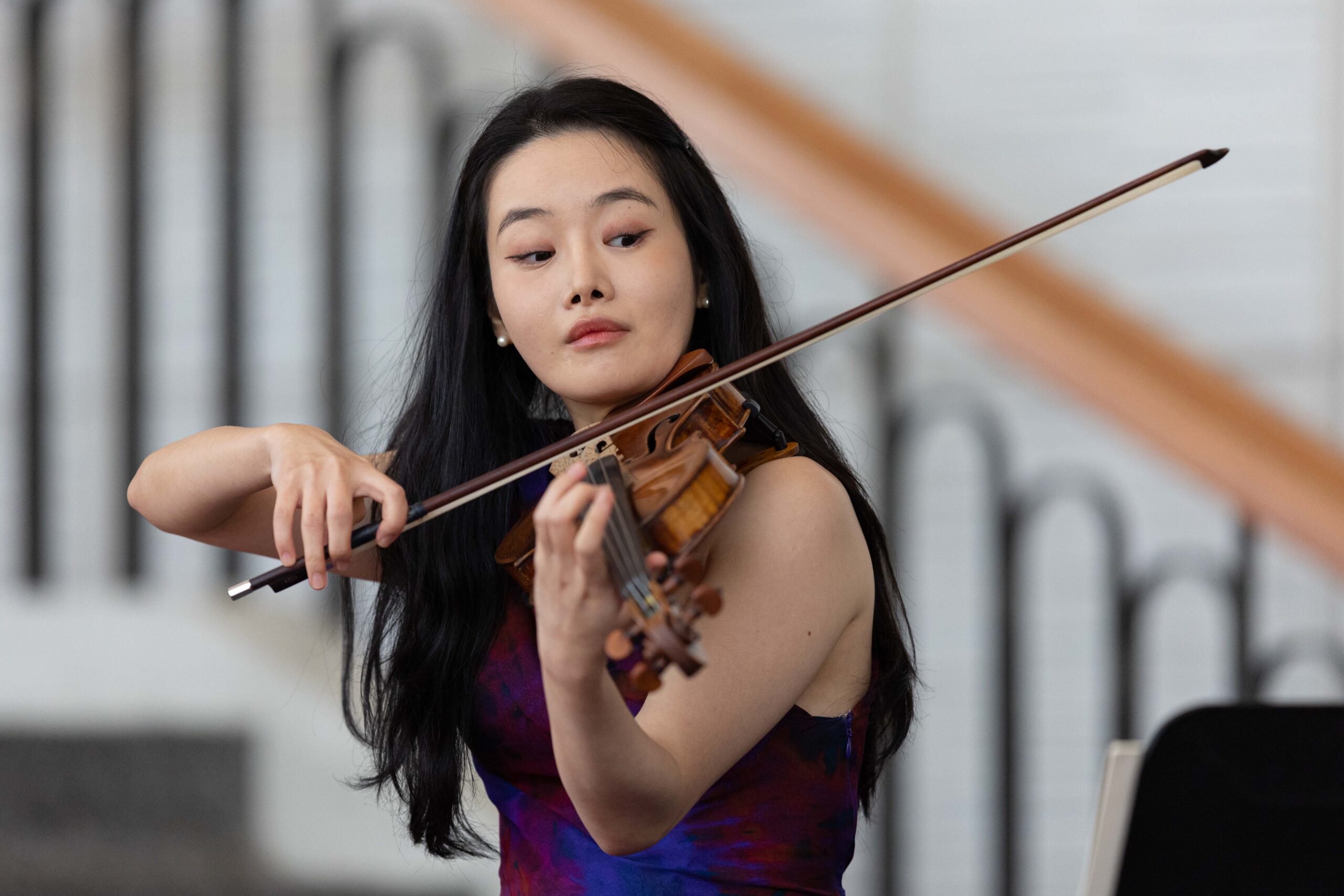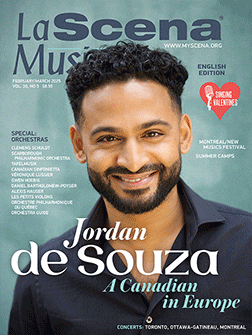This page is also available in / Cette page est également disponible en:
![]() Francais (French)
Francais (French)
On Tuesday, September 12, the Orchestre symphonique de Montréal (OSM) launches its 90th season with two musical masterpieces of the 20th century. Kicking off his 3rd season at the helm of the OSM, Rafael Payare conducts Janáček’s Glagolitic Mass and Stravinsky’s The Rite of Spring.
The programme highlights the Maison symphonique’s great Pierre-Béique, which is celebrating its 10th anniversary this year. The first work on the program features an entire movement for solo organ. OSM organist-in-residence Jean-Willy Kunz brings his virtuosity to the fore on the high notes, while soprano Camilla Tilling, alto Rose Naggar-Tremblay, tenor Ladislav Elgr and bass Matthew Rose form a quartet of vocal soloists alongside the orchestra.
During the Virée classique, audiences had the opportunity to see Payare conducting the OSM as the new season approached, and to observe his good form. Among the 26 concerts in this 10th edition, there was plenty of great symphonic repertoire!
August 16: A stroll through the museum to opera arias
The Latin American music on last year’s opening concert program gave way to famous opera excerpts, and Mussorgsky’s Pictures at an Exhibition, in a grandiose orchestration by Ravel.
The evening was marred by a number of technical problems: the sound recording technology was not properly focused on the instruments, and numerous ambient noises reached the audience, as did persistent vibrations from the loudspeakers. This did not prevent mezzo-soprano Isabel Leonard from excelling in both vocal virtuosity and emotion. She embodied Rosina from Rossini’s Barber of Seville and Carmen from Bizet’s opera of the same name, with the self-assurance and Olympian calm characteristic of great performers. Similarly, in Waxman’s Carmen Fantaisie, violinist Bomsori commanded time, took ownership over the stage, and performed with an air of confidence that suggested the pleasure of playing in front of the audience was guiding all of her choices.

Bomsori in concert on August 19 at Place des arts. Photo: Antoine Saito
The second half of the evening began with a charming, seemingly intimate conversation between Payare and Marianne Dugal, associate 2nd concertmaster. An ingenious idea to get to know the conductors better, shed light on the women and men who make up this orchestra and, undoubtedly, give OSM musicians their close-up.
The cameras on stage showcased all the instrumental sections, including the brass section in Pictures at an Exhibition. André Moisan on clarinet, Austin Howle on tuba, Serge Desgagnés on percussion, Jennifer Schwartz on harp, and the trombone trio led by James Box showed off their power in the finale, “La Grande Porte de Kiev.”
August 18: Mendelssohn’s dazzling Italy
Two days later, Payare was back with the OSM at its finest. As usual, the conductor was bouncy and full of verve in the first movement of Mendelssohn’s Symphony No. 4 – a highly inspired work, unfortunately rarely performed, compared to others from the same period. After a slow and generally gloomy second movement, the brass revitalized the rest of the symphony, particularly in the fourth and final movement, marked by a dramatic sense and polyphonic composition in the tradition of Bach.
August 20: All in chorus with Rafael Payare
The final concerts in the Virée classique series had a very choral flavor. On August 20, at 11:30 am, Payare joined three other choirmasters for a concert featuring the Cantique de Jean Racine and Fauré’s Requiem, two works that often go hand in hand.
They were preceded by Quebec composer François Morel’s Prière pour orgue, a virtuoso piece performed by Jean-Willy Kunz.
Exceptionally for a conductor of a leading orchestra, Payare was placed on an equal footing with the other performing conductors, patiently awaiting his turn in a spirit of contemplation worthy of the repertoire presented that morning. This is rare enough to be underlined, and demonstrates Payare’s humility in the name of the same passion for music. He conducted the Introit, Kyrie, Agnus Dei and In Paradisum, while the rest of the work was taken care of by Roseline Blain of the Société chorale du Plateau Mont-Royal, Gabrielle Gaudreault of the Société Chorale de Saint-Lambert and Marc-Olivier Lacroix of the Ensemble à ContreVoix, all amateur choirs that participated in the event.
August 20: The famous Carmina Burana
A few hours later, Payare returned to the Maison symphonique with the OSM Chorus for the closing concert of the Virée classique: Carl Orff’s Carmina Burana. While the work is widely performed today, the lyrics are often neglected. The OSM, which always seems to add a dose of originality to its events, offered the text in surtitles, leading the audience to discover a young woman in search of love, who ultimately declares to a man, “I long for you.”
Some passages allude to erotic love as a “tireless play [of]limbs, arms and lips”, while others are more explicit: “I would deprive myself for the Queen of England to lie between my arms… By virginal love, I burn whole”.
Although finesse is certainly not one of the score’s hallmarks, it is no coincidence that Carmina Burana belongs to the great choral and symphonic repertoire. Its thunderous style lent itself perfectly to a closing concert, and it’s that same style that audiences will be met with on Tuesday, this time for the opening concert of the OSM’s 2023-2024 season, featuring Janáček’s explosive Glagolitic Mass.
Translation by Eva Stone-Barney
This page is also available in / Cette page est également disponible en:
![]() Francais (French)
Francais (French)















